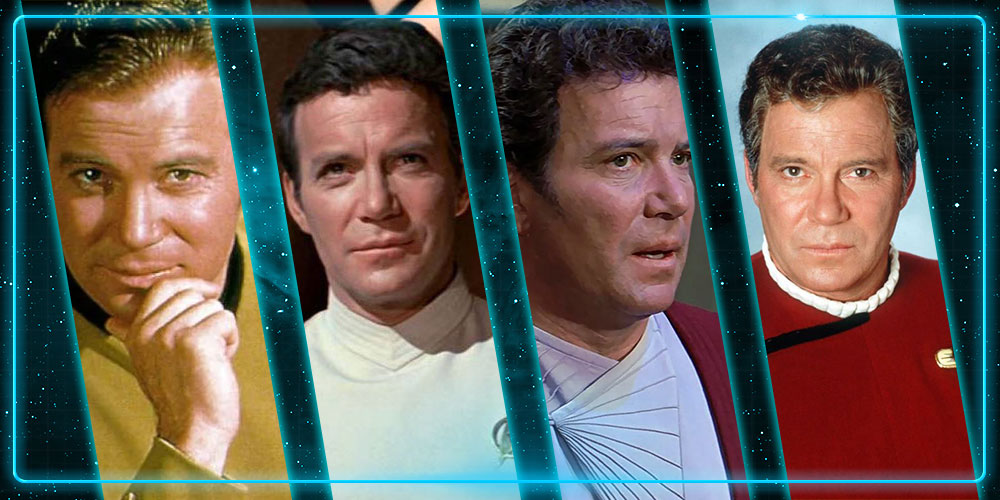Captain James Kirk’s Era: 1966-1989
In any discussion of the legendary Captain James T. Kirk of the Enterprise, it is necessary to set aside the cultural mythology that has sprung up around the character and to see him as he is portrayed on the television show.
It is common knowledge that Gene Roddenberry’s original pitch for Star Trek described the ship’s proposed hero as a space-age Captain Horatio Hornblower. Roddenberry intended Kirk to be a portrayal of traditional masculinity.
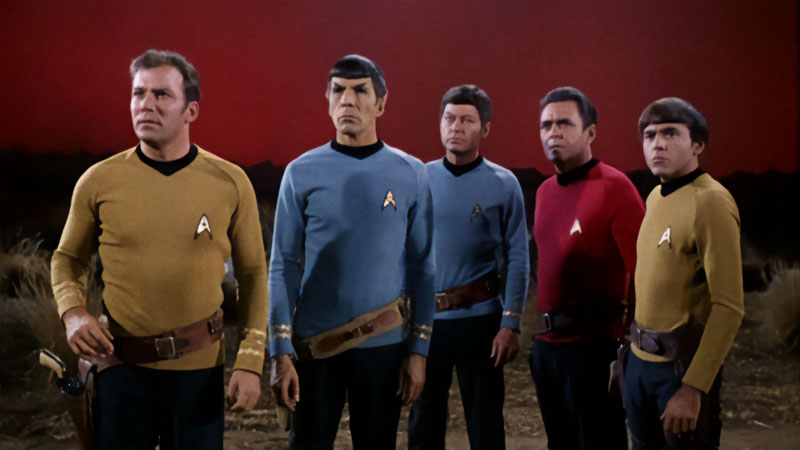
Kirk, Soldier and Space Cowboy
Kirk is a rugged individualist who eschews the companionship of a female life partner, choosing instead the homosocial bonds of platonic brotherhood with Mr Spock. Kirk is both a space cowboy and a strategic peacemaker. He can beat his adversaries in a fist fight and he can out-manoeuvre them with his cool-headed logic.
Star Trek aired during the Vietnam era, a time when the American public was becoming deeply disillusioned with the United States government, ambivalent toward the military, and angry about the unpopular war. Much discourse, therefore, exists around whether the service, Starfleet, is a military organization.
Yet the fact remains that Kirk refers to himself as a “soldier.” In his book Manhood in America, Michael Kimmel sheds light on the reason why Roddenberry may have chosen to portray Kirk thus: “Even though the soldier, previously one of the apotheoses of manliness, lost its respect and stability as a masculine symbol due to the Vietnam War, there still existed the notion of strong leadership and military duty as a noble virtue” (174). As Kirk exemplified that strong leadership and placed duty above everything else, this is an apt description of Kirk.
The Enemy Within
The episode that most profoundly illustrates Kirk as a “manly man” is “The Enemy Within.” In this episode, a transporter accident causes Kirk to be split into two “Kirks.” One half is the Freudian id, the dark passions and rage and propensity toward violence.
The other half is the Freudian superego, the part of him that makes rational decisions and manifests compassion. The moral of the episode is that on their own, these two disparate halves will die, but together, they make Kirk the strong leader that we see in Star Trek.
Working together, these two sides allow Kirk to fight the Gorn, yet allow for mercy; to bluff Balok, but to restrain himself from committing violence against him; to be a worthy opponent to the Klingon commanders, and to engage in a battle of wits with a cunning Romulan commander.
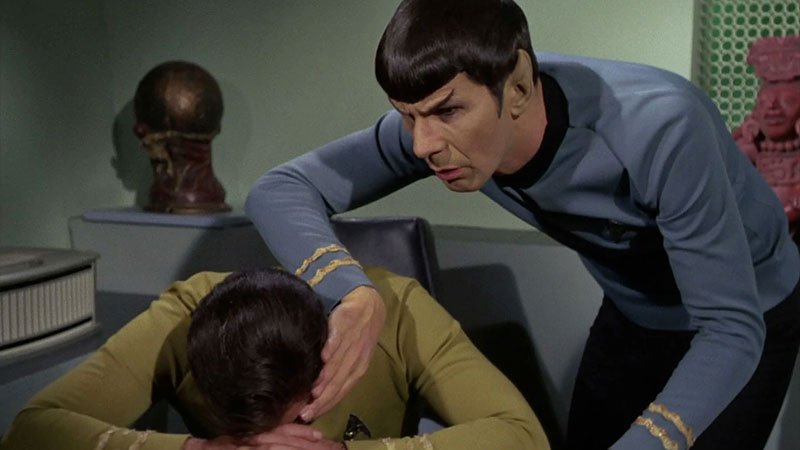
Trauma: A Source of Strength?
But to what extent does his trauma inform his strength and courage? In his 2013 paper, Mad Masculinity: Alcohol, War and Constructing Masculinity in Mad Men, Dr Sychterz, Professor of English and specialist in war poetry, makes the argument that war and trauma turn boys into men.
He notes that the generation born to the men who fought in WWII looked up to those men as role models in masculinity. As Star Trek was conceived during the Vietnam era by a WWII veteran, I drew from this paper the conclusion that during the time in which Captain Kirk came to be a cultural symbol, trauma was seen as a source of strength.
Definitions of Trauma
It is useful here to define trauma so that we may have a frame of reference. Dr Judith Herman, Associate Clinical Professor of Psychiatry at Harvard Medical School, may be said to have “written the book” on trauma in her book, Trauma and Recovery. She defines physiological trauma as “an affliction of the powerless. Now of trauma, the victim is rendered helpless by overwhelming force. …
When the force is that of other … beings, we speak of atrocities. Traumatic events overwhelm the ordinary systems of care that give people a sense of control, connection, and meaning. … Traumatic events generally involve threats to life or bodily integrity, or a close personal encounter with violence and death. They confront human beings with the extremities of helplessness and terror” (33).
Dr. Jordan Peterson, Professor of Psychology at the University of Toronto, adds another dimension to the experience of trauma and the development of subsequent post-traumatic disorder: “The evidence on PTSD is quite clear. People who develop PTSD often do so because they have encountered someone malevolent, that they have encountered someone who wishes to do them harm for the sake of the harm” (Peterson 2020).
Does not the above definition describe nearly every episode of Star Trek? What effect is the experience of terror and helplessness showed to have upon the masculine ability, strength, and courage of Captain Kirk?
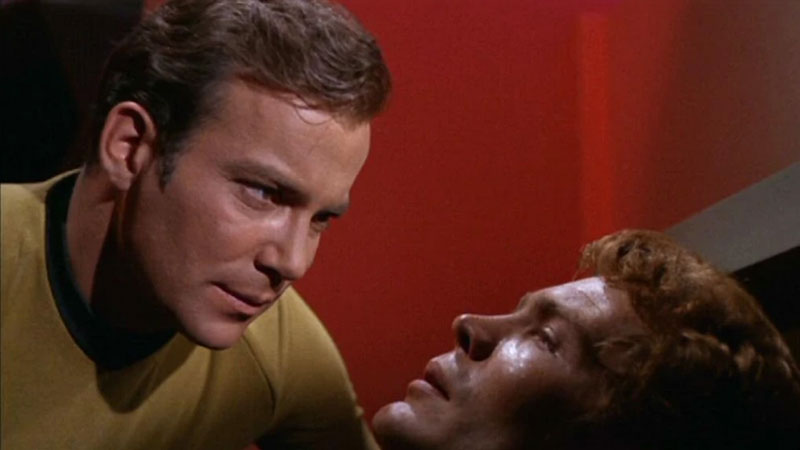
The Reality of the Post Traumatic Experience
The show falls far short of portraying the reality of the post-traumatic experience. The closest Star Trek is able to come to portraying the long-term effect of trauma on Captain Kirk are the episodes “Obsession” and “The Conscience of the King.”
In the first, Kirk is forced to come to terms with the alien being that destroyed his Captain and his crew back when he was a young lieutenant. This episode gives us a rare glimpse of survivor’s guilt, but the trauma is apparently resolved by the end of the episode.
In the second example, we learn that Kirk was a witness to a massacre when he was a fourteen-year-old child. His response to this is an obsessive search for the perpetrator of the massacre, Kodos the Executioner.
He uses his masculine charms to try to get information from the suspect’s daughter. Here, too, the only example of long-term trauma is portrayed in Kirk’s fellow survivor Riley, who makes an attempt on the suspect’s life before being stopped by Captain Kirk. The awful realities of post-traumatic disorders are glossed over in both of these examples.
Yet how accurate is this idealized image of traumatized manhood? Dr Herman traces a detailed history of the study of trauma and post-traumatic disorders in Trauma and Recovery. She notes that although studies of what was called during WWI “shell shock” and during WWII “combat neurosis” went on as long as the conflicts did, for the purpose of returning the soldiers to functionality and active duty as quickly as possible, “systematic, large-scale investigation of the long-term psychological effects of combat was not undertaken until after the Vietnam war” (26).
Thus, Star Trek was created during a period in which the psychological well-being of veterans was ignored, and the lasting effects of war trauma were forgotten (Herman 26).
Historical and Cultural Influences
Taking into consideration the episodic nature of television shows at that time, combined with the cultural forgetfulness of the distress of veterans, is it any wonder that week after week, Kirk and his crew are seen as surviving traumatic, life-changing events, only to shake off the effects, gather around Kirk’s command chair for a good post-crisis laugh, and meet later in the captain’s quarters for some good Saurian brandy?
Cultural awareness of the effects trauma has upon the human psyche did not exist to the extent that it does today, (PTSD, as a diagnosis, was not added to the DSM until 1980). This is reflected in the popular culture of the time. The risk of danger and trauma that Kirk survived clearly contributes to his manliness, making him appear more manly than ever, but seemingly untouched and unscathed by his trauma.
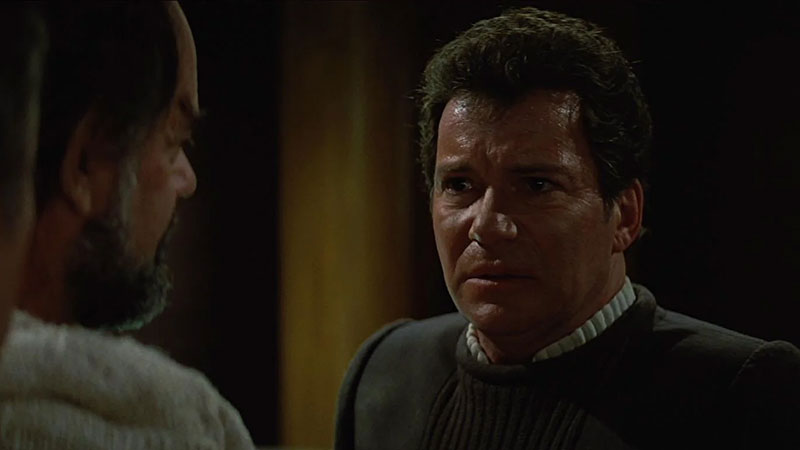
“I Need My Pain!”
Or was the absence of the portrayal of post-traumatic stress in Star Trek a part of Gene Roddenberry’s vision? Would mankind, in his view, have evolved past the trauma responses we experience today or was the omission one of ignorance? A possible explanation is in Roddenberry’s 1979 novelization of The Motion Picture.
Although the context is problematic, the intent is quite clear, that Roddenberry did indeed recognize the toll those experiences took: “… he [Kirk] slowly recovered from the fatigue and emotional wounds of those five long years out there” (32).
Kirk’s exclamation in Star Trek V: “The Final Frontier,” would seem to corroborate the argument: “I don’t want my pain taken away. I need my pain!” Movie-era Kirk is a much more thoughtful and introspective man than the action-adventure hero of the series, and it appears that he has after all come to see his pain and trauma as a source of strength.
A Question of Consent
There is one more source of trauma that has not been satisfactorily addressed in all the years that Star Trek has been on the air, and that is the uncomfortable topic of sexual trauma. On several occasions, Kirk was placed in a situation in which he was forced to engage in sexual activity without his consent because to refuse would mean placing his crew and his ship in jeopardy. For example, consider his encounter with Deela, in “Wink of an Eye.” Deela has captured the crew of the Enterprise in order to perpetuate her species’ procreation.
It is very easy to fall prey to the myth that hypermasculine men like Kirk are up for sexual activity, whether consensual or non-consensual, at any time and with any person under any circumstances.
But men need to be able to give informed consent as well. If a man is, as Kirk was on more than one occasion, placed in a position where he cannot say “no” to a sexual encounter, must we view this as proof that he is a lady’s man, or can we conclude that these encounters are, indeed, rape?
In her interdisciplinary paper, “The Vulnerability of the Penis,” Janine Clark offers some insight into this question: “The use of sexual violence against men in armed conflict, however, remains under-researched and is often sidelined” (Clark). (I am, of course, comparing the experience of Kirk, held under a weapon, to the experience of a soldier in armed conflict). Perhaps it is the very fact that this issue is sidelined and under-researched that we don’t ask these questions. Clark suggests that we should:
“Sexual violence against men, in contrast, exposes the vulnerability of the penis and thus represents a deeper security threat. Fundamentally, preserving the integrity and power of the phallus is critical to the security and integrity of phallocentric masculinity and thus to maintain systemic stability that is crucial in situations of war and armed conflict (Clark 1)”.
In other words, can it be that one of the defining aspects of Kirk’s masculinity, his sexuality, is being wounded and threatened by these non-consensual encounters? Clearly, the further conversation needs to take place around this troubling topic. We will return to this question later.
Although Kirk’s legend and his story are ongoing, Star Trek: The Undiscovered Country shows a much more personal look at Kirk coming to terms with his pain and his trauma. His growth arc, from hatred and racism toward the Klingons to his final words to the new Klingon chancellor, “You’ve restored my son’s [faith],” indicates that he has experienced post-traumatic growth…
[to be continued]
Author’s note: the following is the first of three sections from a research paper I wrote for my English Masculinities college course this spring. I’m very proud of my paper and wanted to share it with everyone.

